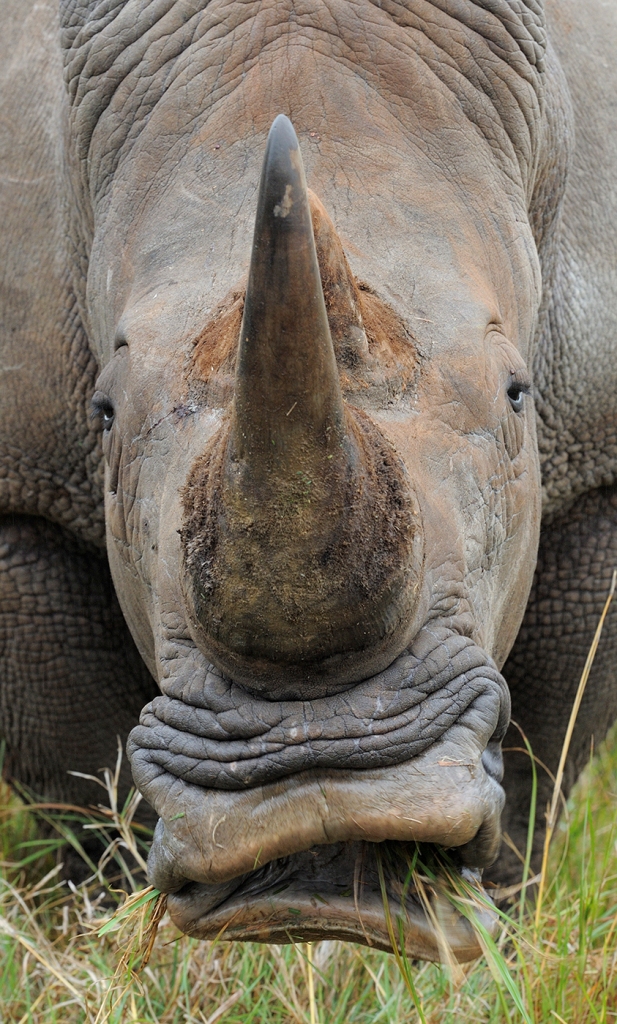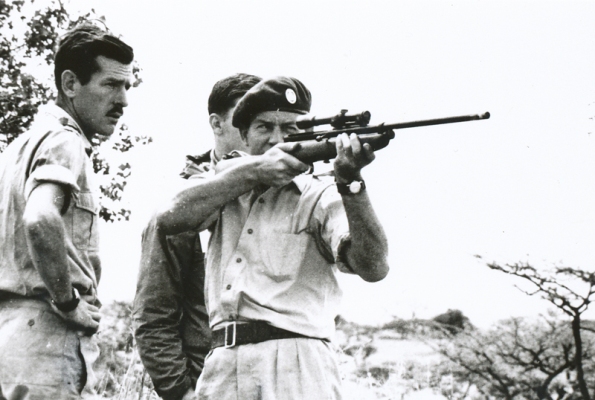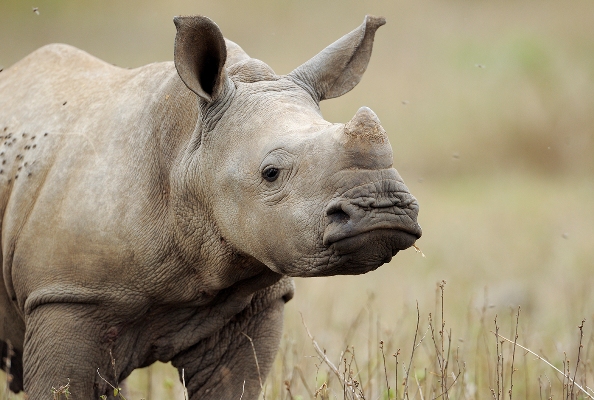What can we do?
On the way to our next encounter, we have some time to reflect. There is no lack of initiatives for the benefit of one of the most iconic animals still walking the earth. One of them is operated by the South African Wildland Conservation Trust (WCT). The procedure involves capturing the rhino, immobilize it, placing a GPS sender in its horn, and letting it loose. The implantation is painless, and afterwards the animal can be followed everywhere, and so can subsequently potential poachers. Not surprisingly, though, money is a hurdle. To equip one single animal with GPS costs about €2000.

There are several relocation projects going on, to safer places. Ideas flourish. Why not have Coca Cola put a label on their bottles, telling people rhino horn is useless, except on a rhino. Coca cola products go out to the same target groups that might buy rhino horn for medicinal purposes. This would address the core issue: How to kill the market. Get to the end user in the ongoing spiral of crime, feed him the proper info, and there might be hope.
We have now reached a farm in the Karkloof valley, not far from Pietermaritzburg. This is the home of Dr. Ian Player, grand old man of South African wildlife conservation, and a key person when it came to saving the white rhino first time around, several decades ago, when his Operation Rhino travelled the world.

We pose the question to him, how to choke the Asian market. There is a short laugh.
To make the Chinese stop believing in their old methods of health cure is about the
same as asking Christians to stop believing in Jesus Christ.
A life time fighter for wildlife, for a long time in a country that during apartheid was the pariah of the world, Ian Player developed into a sworn realist. The world to-day, however, looks very different from the one he started out in, as a field ranger at the Natal Park's Board, and later as its Chief Conservator. Now, at 85, his body is frail, but his mind is not.
Dr. Player summarizes:
We had reached the stage in iMfolozi where we had re-established the white rhino, a
seriously endangered species. Between 1962 - 1970 we had distributed 50 white rhinos into the world zoos and the species could pass for having been saved......So the Board comes along and says 'we have done everything we can -- we got them
scattered around the country. We have taken them to the zoos of the world. And the zoos are full. Now, there are too many in iMfolozi and we got to shoot them.' So I say 'over my dead body will you shoot them. No way.' They say 'maybe it will be over your dead body because we are going to.' So now -- what do I do?
Dr. Player found a way to save the rhino then, when it was threatening to go extinct -- and again, when it was "too many"; by going overseas, mobilizing the Zoological Society of London and all the most influential people he could muster for the cause. In the end, there was no rhino cull. Instead, there were new developments, like selling rhinos to private ranchers, opening a tourist market that is continuously booming.
Dr. Player concludes:
There is no Silver bullet to solve this complex issue. But the fact that the white rhino
came within an inch of extinction within our lifetime seemed to drive a collective consciousness and willingness to act..There needs, for instance,to be an international debate what to do with the huge depots of rhino horn stacked away in government storage, confiscated from the illegal market. And the question how to treat the rhino horn is a difficult one. Do we in the end get to treat a unique wild animal like some sort of vegetable, farmed as crops -- to balance a crime-pestered and over-heated market? However we look at it -- we need a bold, unified set of actions in order to stop the rhino poachers from slaughtering our natural heritage before our eyes.

When veterinary Fowlds witnessed the agonizing death of the mutilated rhino that day in the Eastern Cape, a young bull that turned out to be GEZA, which he himself had been relocating to 'a safer place' a couple of years earlier, he decided his report should not stay in his vet folder. Saving the rhino from extinction -- again --- indeed appears to be a challenge belonging on the largest possible stage. Otherwise this warning: "The last rhino to survive may already have been born" -- could easily turn into fact.

Black & white photo: Dr. Ian Player Archive
All other photos: Staffan Widstrand